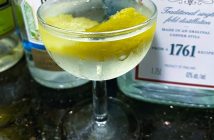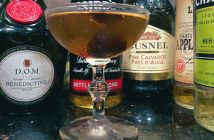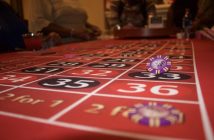
With spring in full swing, wine shops are chock-full of Rosé. That’s a far cry from even five years ago when only a handful of choices existed on most U.S. store shelves. Personally, I believe in drinking Rosé all year. Well-made examples are eminently food friendly, refreshing and simply delicious. However, it’s likely to take a few more years for Americans to become 365-day-a-year Rosé drinkers, so for now, I’ll have to be satisfied with the strides we’ve made to date.
Rosé comes in a myriad of shades and styles. It’s produced from nearly any red grape you can imagine (some white too), and production methodology can vary greatly. I am happy to say that we’ve come far enough in this country that people knee deep in Rosé love are focused on whether a particular offering is made from grapes pressed specifically for Rosé (intentional) or if it’s made from juice bled off from producing a hearty red (saignée). There’s no question that intentional Rosés require a different level of dedication from the vineyard on down the line. Aim higher and you can reach loftier plateaus; it’s fair to say that intentional Rosé has the ability to reach a level of greatness most bleed-off Rosés will never dream of. But that’s not to say that Rosés produced using the saignée method can’t be delicious, because they sure can be.
Like a lot of things in the wine world when it comes to Rosé, it’s all about how deep you want to dig in. The most important thing about any bottle of wine in front of you is whether or not you like; the rest are details you may or may not care about. So this isn’t a story about intentional versus saignée Rosé — it’s a story about delicious Rosé. I tasted through a fair number of Rosés (47 in all), and the only criteria I used to select the wines below are tastiness and relative value. That’s to say I think the Rosés I’ve included are all delicious and provide fair, or better, value for the price in question. Spring is here and summer is around the corner, so you should drink a lot of Rosé. But you should also tuck away a case of your favorite Rosés for Thanksgiving, because it’s the perfect wine for that holiday.
Mulderbosch Cabernet Sauvignon Rosé ($14)
This South African Rosé was produced from Cabernet Sauvignon grown in the coastal region. This offering is more delicate in color than one would expect from a Cabernet-based Rosé. Red cherry and bits of vanilla are evident on the nose. Raspberry, watermelon and savory herbs are palpable on the palate. The finish is lovey and dry with copious mineral and spice notes.
Pedroncelli 2016 Dry Rosé of Zinfandel ($15)
Pedroncelli, which is celebrating its 90th anniversary this year, has been producing a dry Rosé from Zinfandel for decades. This is made from Dry Creek Valley fruit. Ripe wild strawberry and white pepper notes are evident on the nose. The palate is loaded with appealing red fruit flavors. The long finish shows off continued juicy red fruit and hints of vanilla. This beautifully dry expression of Zinfandel has a bit more heft than the average Rosé and is suitable for pairing with bolder foods than most.
Chronic Cellars 2016 Pink Pedals Rosé ($15)
This Paso Robles Rosé is a blend of Grenache (87%) and Syrah (13%). Oodles of ripe cherry aromas waft from the nose. The palate is loaded with fleshy melon fruit flavors and bits of spice. The finish is crisp and refreshing with racy acid. Everything about this wine is fun and tasty.
Toad Hollow 2016 Dry Rosé of Pinot Noir ($15)
The fruit was sourced on the Sonoma side of Carneros. It’s entirely Pinot Noir. Red violet and watermelon aromas lead the charge here. Strawberry and stone fruit flavors drive the palate. Red raspberry leads the finish along with hints of crème fraiche. Firm acid keeps things refreshing and crisp. It would be a great partner for grain salads or mushroom dishes.
Day Owl 2016 Rosé ($15)
This Barbera-based Rosé was produced from fruit grown in Madera County, Central Coast and Paso Robles, California. Violet and red plum aromas dominate the nose. The palate is studded with cherry, strawberry and wisps of yellow peach. Hints of lemon curd are evident on the long crisp finish. This offering is really tasty all by itself, but it’ll pair with a wide array of foods.
Michael Mondavi Family 2016 Isabel Rosé ($20)
Isabel is a blend of Cabernet Sauvignon (75%), Barbera (23.5%) and Muscat sourced throughout California. Anjou pear, wild strawberry and hints of orange dot the nose here. The palate is stuffed with bright red fruit flavors that give Isabel an inherent juiciness. Bits of pomegranate and sour dried cherry are evident on the fleshy finish, whose final note is a kiss of crispness. Bonus points here for a stunning package.
Château De Ségriès 2016 Rosé Tavel AOC ($21)
This offering is a blend of Grenache (50%), Cinsault (30%), Clairette (10%) and Syrah (10%). The bright red hue is cheery and notable. Intense red berry aromas leap from the nose; cherry and strawberry are of particular note. Savory herbs, cranberry and pomegranate flavors are all present on the substantial palate. Continued red fruit, a core of spices and subtle bits of limestone are all evident on persistent finish. This Rosé has more weight than average and will work with somewhat substantial foods.
ONX 2016 Indie Rosé of Tempranillo ($19)
Indie is composed entirely of Tempranillo from their Paso Robles Estate located in the Templeton Gap District. Stone fruit and citrus aromas lead the welcoming nose. Ripe, red fruits such as strawberry and cherry are strewn through the palate alongside peach and subtle apricot flavors. The mouthwatering finish features a host of spices and hints of minerals. While this Rosé will pair beautifully with many foods, in my mind, it’s the perfect taco wine. If I was only going to recommend two or three Rosés, Indie still would have made the cut.
Chateau Ferry Lacombe 2016 Haedus Rosé ($22)
This Cotes de Provence Rosé is composed of Grenache (55%), Syrah (20%), Cinsault (15%) and Vermentino (10%). Super-fresh, red berry fruit and blood orange aromas are part of the engaging aromatics. Raspberry, cherry and wisps of lemon ice dot the palate. The crisp finish here has good length and shows off continuing red fruit character. It’s tasty all alone or with light foods.
Martin Ray Rosé of Pinot Noir ($25)
This Rosé is composed entirely of Russian River Valley Pinot Noir. Stone fruits and sweet, bright red fruit aromas nearly explode from the nose here. Bits of tangerine lead the palate, which also shows off strawberry, morel cherry and a firm core of spices. A touch of chamomile tea leads the long, zesty finish. You could pair this with food, but it’s perfectly happy on its own and you will be too.
Rodney Strong Rosé of Pinot Noir ($25)
This is produced from 100% Russian River Valley Pinot Noir. I’ve been a proponent of what Rodney Strong does for years. They offer widely available wines in a number of price tiers that often overdeliver on quality and always represent the grapes in question appropriately. Add this Rosé to the list of reasons to buy their wines with confidence. Just a hint of thyme emerges on the nose followed by red berry fruit and white pepper. Cherry, raspberry and strawberry characteristics form a strong core of red fruits that star through the juicy and remarkably appealing palate. The long finish features cranberry, cherry and a kiss of crème fraiche. Among a list of already curated offerings, this is in the top handful.
Stewart Cellars 2016 Sonoma Mountain Rosé ($28)
Pinot Gris and Pinot Noir from two Sonoma Mountain Vineyards were blended to create this Rosé. Bartlett pear and watermelon aromas are evident. The even-keeled palate is loaded with red cherry, yellow cling peach and a core of spices. All of these characteristics continue on the above average finish. This is a soft and somewhat gentle Rosé with beguiling complexity. It’s more expressive a couple degrees warmer than average, so for best results, don’t over-chill.
Chateau d’Esclans 2015 Rock Angel Rosé ($35)
This is primarily Grenache and Vermentino from their estate in Provence. In the glass, Rock Angel epitomizes the description of extremely pale Rosé. The aromatics are fresh, juicy, red and clean. The palate is deeply layered with continuing red fruit characteristics but light on the tongue. There’s a lovely texture that carries through the lengthy mineral and spice-laden finish. Firm acid keeps it all in check.
Check out Gabe’s View for more wine reviews, and follow Gabe on Twitter!
Tags: Rosé wine, wine reviews


